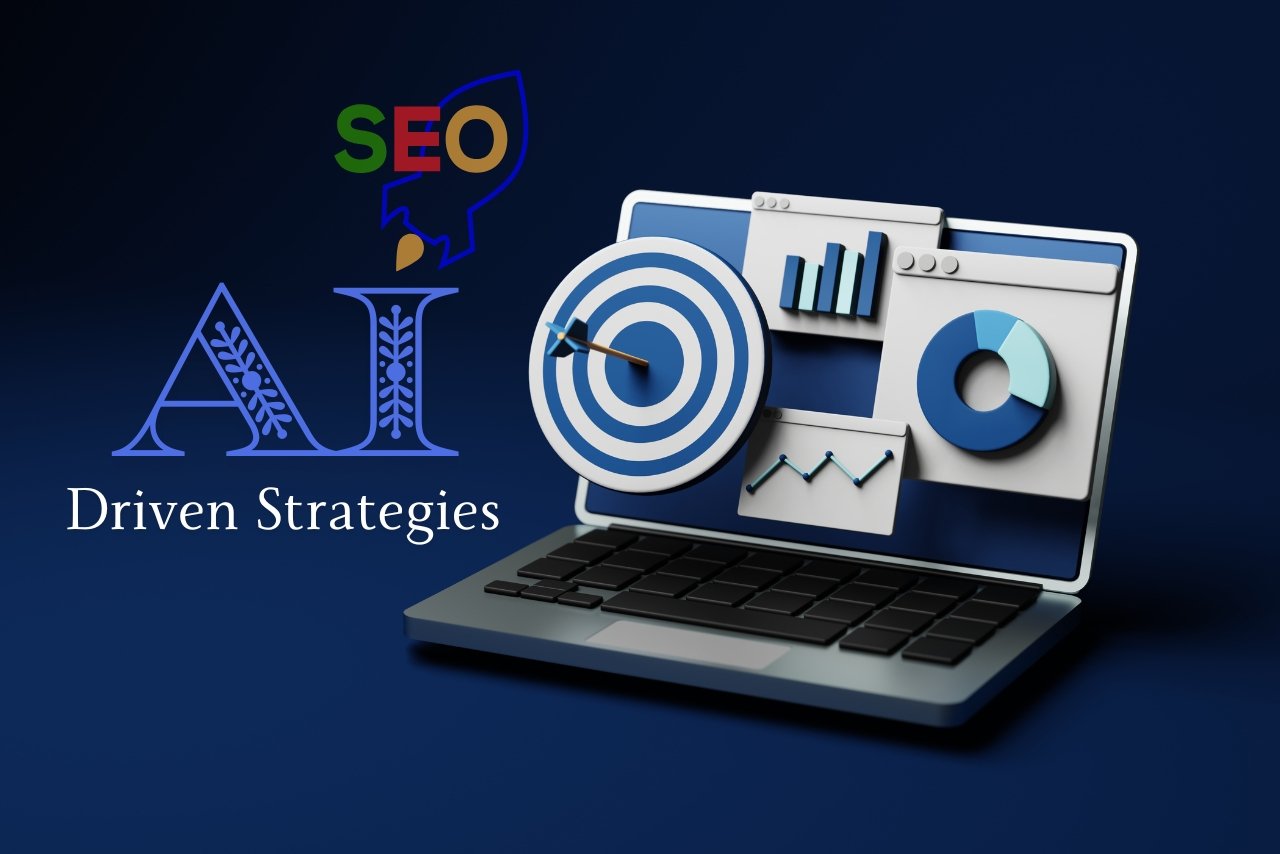Augmented reality (AR) is a transformative technology that overlays digital elements onto the real world, reshaping the digital marketing landscape. It enhances consumer experiences through interactivity and personalization, enabling brands to engage audiences innovatively. From the use of QR codes to create augmented content to virtual trials that allow customers to visualize products in their environment, AR is redefining marketing strategies.
AR’s impact extends to experiential marketing, enabling brands to craft immersive narratives that forge emotional connections with consumers, ultimately fostering brand loyalty. Alongside AR, virtual reality (VR) is also making waves in digital marketing, particularly in sectors like real estate and travel promotion.
These technologies are poised to revolutionize marketing, providing unique and engaging experiences while offering brands invaluable insights into consumer behaviour.
What is augmented reality?

Before we get into the specifics of augmented reality reshape digital marketing, discussing augmented reality in general may be helpful. Augmented reality is a technology that superimposes digital elements into the real world.
With AR, you can use your screen to enhance the world. One of the first and most famous examples of augmented reality is a mobile application called Pokémon GO. The app allows users to view the real world on the phone’s screen using the device’s camera. The difference is that they also see and relate to Pokémon (the fantastical creatures from the multimedia series of the same name) through the same lens. Ultimately, it allows players to “catch” Pokemon anywhere.
Although this is a specific example, AR always uses the same concept. Whether you use a phone screen, smart glasses, or other display type, AR combines virtual elements with a world representation.
Augmented and virtual reality are often confused, but significant differences exist. Augmented reality extends the world you see through the appearance of a specific device, while virtual reality allows developers to enter a digital environment such as a virtual world.
How can augmented reality reshape digital marketing?
Augmented reality is changing the way people interact with the world around them. It is changing the way consumers buy products and the way merchants sell. AR Retailers are creating immersive virtual experiences that allow shoppers to see things they can’t physically touch.
AR technology has already changed the marketing landscape, but marketing has only scratched the surface of the impact AR technology will have on business. The capabilities of current AR technologies limit marketers, but as new technologies develop, AR can offer even more new ways to engage consumers.
For example, Google recently launched an In-App Ads app that uses augmented reality to target mobile devices. This new app is just one of the many ways AR is changing itself, with many more.
Using AR for Personalization and Innovation
Most importantly, AR personalizes the customer journey like never before. By providing an immersive and interactive experience, AR allows consumers to directly understand how a product looks or feels in their environment before purchasing. From IKEA’s website app, which allows shoppers to virtually “fix” furniture in their home, to Sephora’s Virtual Artist app, which empowers employees in offices, brands are looking to improve the shopping experience. And are using augmented reality to maximize customer satisfaction. Minimize unnecessary questions. Unsure about online shopping.
AR is also an airline carrier. Instead of relying solely on traditional static images or videos, brands can create interactive narratives, allowing consumers to become part of the story. This compelling story creates an emotional connection between the brand and the consumer, increasing brand loyalty. For example, Pepsi Max’s AR campaign “Uncredited” gives everyday stations an exciting and unexpected twist, creating an unforgettable brand experience. AR has revolutionized marketing.
How Will Augmented and Virtual Reality Influence Digital Marketing?
Augmented Reality (AR) and Virtual Reality (VR) have recently gained momentum and brought about various industry changes. One area where they have made a significant impact is digital marketing. As technology evolves, marketers seek new ways to integrate AR and VR into their systems to improve customer experiences and increase engagement. This article explores the possibilities of augmented and virtual reality in digital marketing and how they can change the industry.
Benefits of Augmented Reality in Digital Marketing
Incorporating AR into digital marketing can bring many benefits to brands and consumers. First, it increases customer loyalty by providing interactive and engaging experiences. Consumers are more likely to remember and share their AR experiences, increasing brand awareness and word of mouth. Second, AR can help brands create a unique and differentiated market position. By providing innovative and personalized experiences, brands can stand out and gain loyal customers.
In addition, AR can increase conversions and sales by reducing barriers to purchase. AR applications allow shoppers to see items at their location, increasing confidence when making purchase decisions. This leads to high conversion rates and low response rates. Finally, AR enables brands to gather valuable data and insights into customer preferences and behavior. This data can be used to improve marketing strategies and personalize future customer interactions.
How to use AR technology in Digital Marketing

When it comes to interesting technological ideas, how does AR work in marketing? Below are some examples of AR ads:
1. QR codes
QR codes have been used before. You’ve probably seen QR codes at restaurants that you scan with your phone and open a digital menu. Although the interaction does not involve augmented reality, augmented reality technology can enhance the experience.
For example, you can put a QR code on postcards, posters, or anything else people can relate to. They can then use the QR code to open a website that overlays digital elements over everything on the screen.
2. Virtual trials
Marketing software will help you understand the value of AR. Imagine you have an online clothing store. People can’t try on clothes before buying them, making digital shopping difficult.
But you can use AR to solve this problem. AR allows you to predict how a given item of clothing will look to a person using the zoom function on a smartphone. They can buy, use, and test their cameras virtually on mobile phones. This AR experience is a powerful shopping tool for consumers and businesses. AR also allows you to see how things purchased online will look in any environment. You can try out new patio tables, wall colors, kitchen appliances, and more.
3. Experiential marketing
This is where AR marketing ideas can be born. Remember the Pokemon Go example? What if you could create a simple AR app that engages users and serves as a way to promote your product or service? It is a fascinating digital marketing tool providing a unique augmented reality experience to everyone interacting with it. If you don’t want to make a game, you can play digital band music or make cartoon characters dance. The possibilities are endless.
The Impact of Virtual Reality on Digital Marketing
Virtual reality is a technology that creates artificial environments that fully immerse users in digital experiences. Although virtual reality is primarily associated with sports and entertainment, it also finds its place in the digital market. Virtual reality allows marketers to create virtual experiences transporting consumers to different locations, events, and even product demos.
One industry where virtual reality is having a significant impact is real estate. Virtual reality allows potential buyers to virtually view properties, saving time and eliminating the need for in-person visits. This improves customer service and enables real estate agents to reach a wider audience. Virtual tours can also promote travel destinations and give potential visitors an idea before booking a trip.
The Future of Consumer Experience with AR

Marketers constantly look for new ways to attract customers and keep them interested in their products. Augmented reality could be the next significant innovation for sales and marketing, changing the future of marketing.
Augmented reality is a direct or indirect real-time projection of the physical environment augmented by computer-generated sensory data such as audio, video, graphics, or GPS data. This allows you to see things that aren’t there because the entire window appears in your room. For retailers, technology allows consumers to visit stores from the comfort of their own homes. Because of this, customers can get an idea of what the store is like without visiting it in person.
Apart from increasing customer loyalty, AR is also significantly impacting the market. Marketing teams can collect consumer preference data by tracking eye movements and sending personalized content to where they’re looking or staying on screen. This personalized experience can increase customer interest in the brand and the likelihood of purchasing the product.
Augmented Reality is just getting started – it could change the future of retailer marketing forever!
Shopping with AR glasses
Imagine shopping in a store with AR glasses and seeing sizes, fabric patterns, and different styles. Shoppers looking for clothes in stores often use mirrors or look behind curtains to find what they want.
Thanks to the AR glasses, they can see all the products in the store without going out and asking an employee for help. It also allows users to browse all items from the comfort of their homes.
AR glasses cost as little as $1,500, so few people can access this technology. But as the price rises, more and more retailers want to keep them in the class, as it will make shopping more convenient and enjoyable.
Meanwhile, companies like Nike are experimenting with AR running shoes that allow runners to compete in virtual races without actually participating in an actual race. This is just one example of how retailers use augmented reality to provide an enjoyable shopping experience.
Marketing with AR objects
The concepts of virtual reality (VR) and augmented reality (AR) have been around for years, but we’re just now realizing their potential. We’ve already seen the use of virtual reality in video games, but augmented reality is also entering the market.
Recently, Google launched a new app called Pokémon GO that brings AR technology to users in a whole new way. The game uses your phone’s GPS to track your exact location and create an AR map of Pokemon you can find. You can also explore your surroundings by searching through your phone’s camera lens. The game does everything when you’re walking down the street with other people.
This is just one example of how technology constantly changes the future of procurement and marketing. What do you think? Do you think AR will become a common form of marketing? Read below.
Ending Remarks
In conclusion, augmented reality (AR) is a game-changing force in marketing, offering unparalleled engagement, personalization, and innovation opportunities. It empowers brands to create interactive, immersive experiences that captivate consumers and drive brand loyalty. Whether through the integration of AR in QR codes, virtual product trials, or experiential marketing, AR is transforming how businesses connect with their audiences. Moreover, AR’s counterpart, virtual reality (VR), is leaving its mark in digital marketing, particularly in the real estate and travel sectors.
As technology advances, AR and VR will undoubtedly play pivotal roles in shaping the future of marketing, providing novel ways for brands to leave a lasting impact on consumers and gather valuable insights into their preferences and behaviours. Fusing these technologies with marketing strategies promises a dynamic and exciting era ahead, where consumer experiences are redefined, and brands can flourish in the digital landscape.







